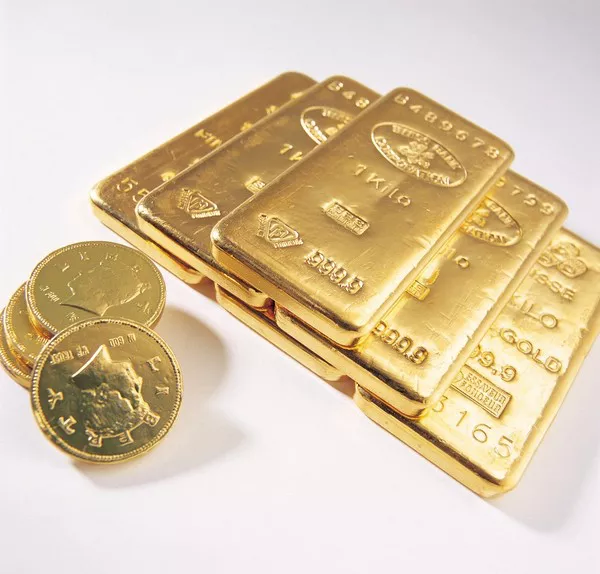Gold jewelry has been a symbol of wealth and luxury for centuries. Whether passed down through generations or acquired as a personal investment, understanding the value of gold jewelry is crucial for both buyers and sellers. To accurately assess the worth of your gold jewelry, it’s essential to consider various factors, from the purity of the gold to the current market conditions. In this comprehensive guide, we will delve into the key elements that determine the value of gold jewelry.
Gold Purity
The purity of gold jewelry is the most significant factor influencing its value. Gold is typically measured in karats, represented as “K” or “kt.” The most common purities you’ll encounter are 24K, 18K, 14K, and 10K.
24K Gold: This is considered pure gold, containing 99.9% gold content. It’s relatively soft and not suitable for everyday jewelry.
18K Gold: Comprising 75% gold and 25% other metals, 18K gold is often used for high-end jewelry. It strikes a balance between purity and durability.
14K Gold: With 58.3% gold content, 14K gold is the most common choice for jewelry in the United States. It offers a good blend of durability and affordability.
10K Gold: This type of gold contains 41.7% gold and is popular for budget-friendly jewelry due to its increased durability.
To determine the purity of your gold jewelry, look for hallmark stamps, often found on the inside of the jewelry piece. These stamps indicate the karat value and serve as a reliable way to assess the gold’s purity.
Weight
The weight of your gold jewelry is another critical factor in determining its value. Gold is priced based on its weight, measured in troy ounces. One troy ounce is equivalent to approximately 31.1 grams. When assessing the weight of your gold jewelry, it’s essential to use a precision scale to get an accurate measurement.
Keep in mind that the weight should be calculated based on the actual gold content in the jewelry. For example, if you have a 14K gold necklace that weighs 20 grams, you’ll need to determine the gold content (58.3% of 20 grams) to calculate its value accurately.
Current Market Price
The price of gold is highly dynamic and can fluctuate daily due to various economic factors, such as inflation, geopolitical events, and supply and demand. To determine the value of your gold jewelry, you must check the current market price of gold. This information is readily available online or through financial news outlets.
The market price of gold is typically quoted in troy ounces. Once you know the weight and purity of your gold jewelry, you can multiply it by the current market price per troy ounce to calculate its base value. Keep in mind that you may receive a slightly lower price when selling your jewelry due to factors like refining costs and dealer margins.
Design and Craftsmanship
While the purity and weight of your gold jewelry are fundamental factors in determining its value, the design and craftsmanship can also play a significant role. Unique, intricate, and well-crafted pieces may have added value beyond their gold content.
Antique or vintage jewelry, for example, can be highly sought after by collectors and may command a premium price. Likewise, jewelry from renowned designers or brands often carries a higher resale value.
Condition
The condition of your gold jewelry is another consideration when assessing its value. Well-maintained pieces with minimal signs of wear and tear will generally be valued more than jewelry that shows extensive damage or wear. Scratches, dents, or missing gemstones can negatively impact the overall value.
If your jewelry has sentimental value but is in poor condition, you may want to consider having it restored by a professional jeweler to maximize its resale potential.
Gemstones and Additional Materials
Gold jewelry often includes gemstones and other materials that can affect its value. The quality, rarity, and size of these gemstones, as well as the type of precious metal used in settings, can significantly influence the overall worth of the piece.
To determine the value accurately, it’s essential to have the gemstones appraised by a qualified gemologist. Additionally, keep in mind that the resale value of gemstones and other materials may not be as high as their purchase price, so it’s essential to manage your expectations.
Historical and Cultural Significance
Some gold jewelry may have historical or cultural significance, making it more valuable to collectors or museums. Pieces with a unique history or ties to a specific culture or time period can command a higher price than similar items without such attributes.
If you believe your gold jewelry has historical or cultural value, consider consulting with experts or institutions that specialize in preserving and assessing such artifacts.
Conclusion
Determining the value of gold jewelry involves a comprehensive assessment of factors such as purity, weight, current market prices, design, condition, gemstones, and historical significance. By considering all these elements, you can make a more informed decision when buying or selling gold jewelry. Remember that valuing gold jewelry is a combination of both art and science, and seeking professional appraisals and market research can help you achieve the most accurate assessment of your precious pieces. Whether you’re an investor, collector, or simply looking to part with a cherished heirloom, understanding the value of your gold jewelry is essential to ensure a fair and profitable transaction.


